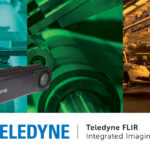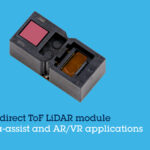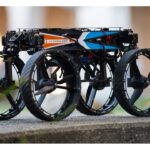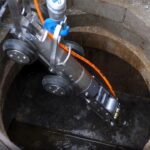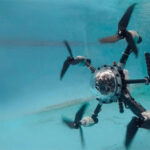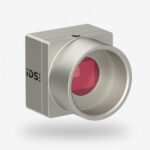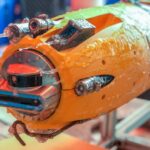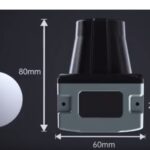Teledyne FLIR IIS announced the Bumblebee X series – an advanced stereo vision solution built on our best-in-class stereo vision portfolio. Their legacy of stereo vision solutions started over 25 years ago with Point Grey Research’s Triclops and Digiclops. Now, they have actualized a new industrial stereo camera Bumblebee X, and a software Spinnaker 3D […]
Robotics
Machine vision meets automation and robotics: IDS at Automate 2024, booth 2855
From the 6th to 9th of May 2024, Automate will take place in Chicago, Illinois at the McComick Place Convention Center. At North America’s largest robotics and automation event, industrial camera manufacturer IDS will be presenting some exciting new technologies from our pillars of Area scan, 3D, and AI vision at booth 2855. These technologies […]
Tiny, all-in-one direct Time-of-Flight module targeted at advanced imaging applications
STMicroelectronics announced an all-in-one, direct Time-of-Flight (dToF) 3D LiDAR (Light Detection And Ranging) module with market-leading 2.3k resolution. They revealed an early design win for the world’s smallest 500k-pixel indirect Time-of-Flight (iToF) sensor. The VL53L9, announced is a new direct ToF 3D LiDAR device with a resolution of up to 2.3k zones. Integrating a dual […]
How will sensors be used to increase warehouse automation?
Many of today’s warehouses have been or are in the process of transitioning from strictly a manual or conventional warehouse to a partially and eventually a fully automated warehouse. Depending on the level of sophistication, any automated process requires a variety of sensing technologies. Research from one company predicts that over 75% of companies will […]
What’s the difference between sensors used in underwater, flying, and creeping robots or drones? part 4
Multimodal robots that can fly and walk or crawl have been the basis of research for many years. In 2016, researchers at the University of Pennsylvania’s GRASP Laboratory reported the development of the Picobug with multimodal characteristics of climbing, jumping, and gliding, or even flying and swimming. With a research paper detailing many executed and […]
What’s the difference between sensors used in underwater, flying, and creeping robots or drones? part 3
The abilities of robots continue to advance with highly capable products performing a variety of tasks, looking almost humanlike as they speak, and even garnering appearances in movies. Perhaps less attractive but equally or even more useful, creeping or crawling robots bring drones down to earth and, in fact, inside the earth. Unlike the micro […]
What’s the difference between sensors used in underwater, flying, and creeping robots or drones? part 2
While flying drones are common in military, consumer, and even commercial applications, there are a few intriguing, much smaller and less familiar flying drones in development. Called a micro air vehicle (MAV), or micro aerial vehicle, this class of very small flying drones have applications in agriculture, disaster relief, by both military and enterprise users, […]
3D image processing solution with AI, 2D cameras, and robotics
The manufacturing sector is currently facing a number of challenges. Technological change, pressing environmental issues, and globalization require a number of adjustments, such as investing in new technologies, conserving resources, and optimizing and securing supply chains. Globally operating companies have to face a changing environment and at the same time manage problems in supply chains. […]
What’s the difference between sensors used in underwater, flying, and creeping robots or drones? part 1
Obviously, different design requirements exist depending on the targeted applications, but autonomous or remotely piloted drones also dictate different criteria. One of the more unique underwater applications involved undersea (in the ice) measurements in Antarctica. The intent of the expedition was to gather sufficient, highly accurate information to improve modeling of ice shelf melting and […]
What advanced sensing techniques are used in cobots?
Most robots incorporate a broad range of sensing technologies to better understand the operating environment and to fulfill their design purpose. These sensors provide information about position, size, orientation, velocity, distance, temperature, weight, force, and more. For collaborative robots or cobots that operate in a close proximity to and even interact with humans, additional sensing […]

